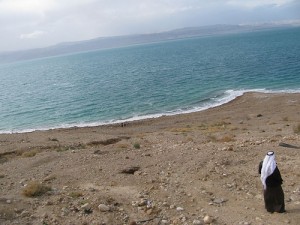 Researchers from Eindhoven University of Technology (EUT) and Hong Kong Polytechnic University have developed a fabric that traps water molecules present in fog. This clever new technology could have applications in dry coastal zones throughout Africa and the Middle East, where lack of water is increasingly both a humanitarian and security concern.
Researchers from Eindhoven University of Technology (EUT) and Hong Kong Polytechnic University have developed a fabric that traps water molecules present in fog. This clever new technology could have applications in dry coastal zones throughout Africa and the Middle East, where lack of water is increasingly both a humanitarian and security concern.
To make the water-trapping fabric, the scientists coated cotton with a polymer called PNIPAAm to create a sponge of sorts that absorbs moisture during low temperatures. This moisture is then released when temperatures rise, according to SciDev.net.
While cotton may not be the most responsible choice for this technology given that cultivation is itself water intensive (unless organic growing principles are applied), the fabric could have wide-ranging benefits in coastal communities that experience frequent fog and low rainfall.
The material absorbs water in the evenings or when temperatures drop and then releases the accumulated moisture when it’s hot outside; in other words, it is “programmed” to release water when it is needed most.
The current samples are optimized by the day and night temperature variations experienced in places like the Namib Desert in Namibia, though it seems that it would be equally effective in humid Gulf countries, where clean drinking water comes at a premium.
According to SciDev.net, just one kilogram of this special fabric can hold as much as 3.4 liters of water, though researchers are working to tweak it to collect more water and function in areas with different temperature ranges. This would broaden its relevance and meet the needs of people living in a wide range of climatic conditions.
The lab-generated samples may be useful for extracting drinking water, according to Catarina Esteves of EUT, but it could have other uses as well.
“One application would be in agriculture,” she told SciDev.Net. “You could mix the coated fibres in the soil where you want to grow plants. At lower temperatures in the evening, it would collect the humidity from the atmosphere. As the temperature goes up the next day, it would release that water into the soil.”
It will be some time before the concept is scaled up and used commercially, but we’ll definitely be keeping our eyes peeled.
:: SciDev.net
Image of coastal fog, Shutterstock




Comments are closed.